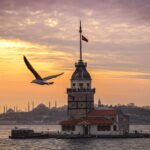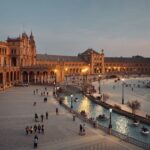Festivals Ceremonies and Celebrations in Turkey
Introduction
Festivals Ceremonies and Celebrations in Turkey : Turkish people love to celebrate, have their own unique way of doing it, some events showcase our scenery. Turkey also have many uniquely Turkish festivals, celebrating both timeless traditions and contemporary practices. Well over 100 festivals take place in Turkey each year and at times it is challenging to keep abreast with all the events that are regularly staged around the Mediterranean country.
In order to keep the rich Anatolian culture in Turkey alive and thriving, in every province, district and even in some villages there are various traditional festivals and gatherings. At the same time, some national and international festivals are held in order to support this purpose. Festivals which represent traditional Turkish culture not only aim to increase the spirit of unity in society, but also to present the cultural wealth of the places where these ceremonies are held.
Some festivals aim to present a product and which have a strong economic element (the Apricot Festival in Malatya, Carpet Festival in Eşme, Cherry Festival in Aksu etc), and others aim to present culture alone are more widely held in Anatolia (the International Culture and Art Activities in the memory of Hacı Bektaş Veli, Abdal Musa gatherings, Galley Ceremonies etc). Another important contribution of these festivals, which eventually become traditions after long years of contribution to social life is that they create an appropriate atmosphere for people to come together and have fun. For example, the “Savşat sahra Pancarı Şenliği” which is held in the Black Sea region during 16-18th July is one of the most prestigious gatherings around, with particular contributions from women.
Games are among the most important events on festival days. People who work all year long in order to enhance production also contribute to the region’s economic development at these festivals. The main purpose of such festivals is to ensure the highest quality for the product involved, and all contests are arranged with this end in mind. Although gatherings are also arranged to present culture, not to promote a specific product, these have gradually moved away from their obstensible purpose and have become a part of cultural tourism. The common feature of festivals and celebrations is they both enhance cooperative efforts in society, and create a unity of ideas or of actions.
National Festivals in Turkey
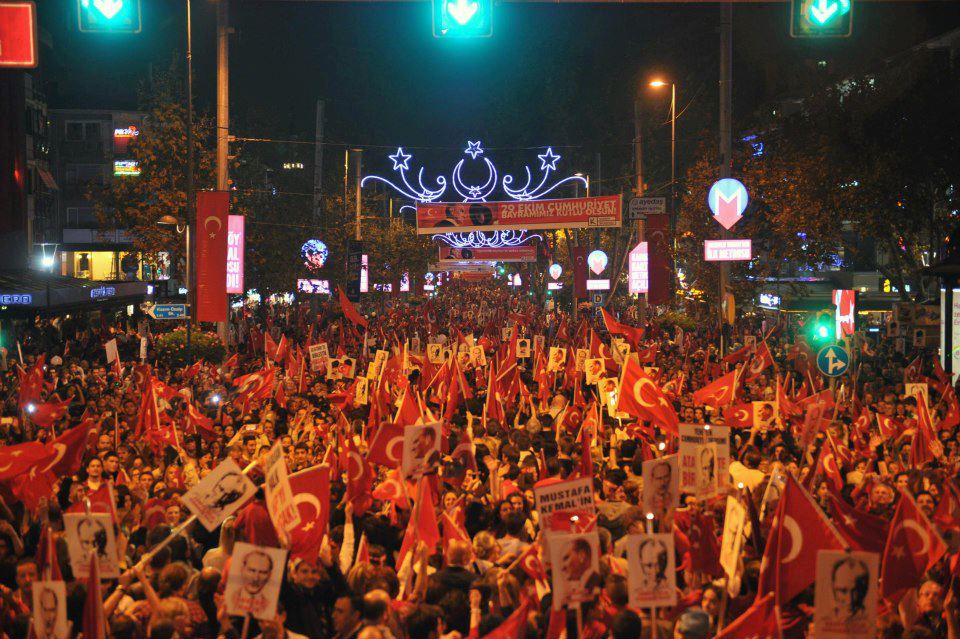
The only traditional element in the official ceremonies of these festivals (the 30th August Victory Festival, the 29th October Rebublic Festival, the Liberation Festival and so on) which are enthusiastically celebrated in cities and towns is the participation of seymens (heroes and dancers from central Anatolia) and zeybeks (the swashbuckling hero of southwestern Anatolian villages) in the celebrations with their special costumes. After the official ceremonies are over, however, in some places workers and artisans gather in the city or municipality hall and organize special entertainments until the late hours of the night, and these entertainments lend a special significance to the festivals. Drums and zurnas are played in these celebrations. Small towns in Anatolia have their own folk dances, but in big cities like Istanbul or Ankara these ceremonies turn into a festival of folk dancing. In many places on national holidays, wrestling matches or races are held after the official ceremonies. In recent years, political parties have organized many entertainments with music on national holidays in order to increase the excitement while competing with other parties. Thus, festival traditions are also subject to a process of change.
Religious Festivals in Turkey
The main reason why religious festivals are not celebrated on the same days every year is because they are calculated according to the lunar calendar called “kameri takvim”. Ramadan and the Feast of the Sacrifice are celebrated ten days earlier each year than the year before, so religious festivals may come to be celebrated in every season. According to the Kameri calendar, Ramadan is celebrated on the first three days of the month Sevval, and the Feast of the Sacrifice is celebrated in four days following the tenth day of the month Zilhicce. These festivals continue to exist in popular tradition, although their effects are not what they once were.

The main characteristics of Ramadan and the Feast of the Sacrifice are that people, neighbours, relatives and friends pay visits and go to see each other. Young people kiss their parents’ hands and receive best wishes and blessings from them. It is a tradition to give money or little gifts to those children’s who kiss one’s hands. Candies are served to visitors during Ramadan. That is why Ramadan is also called the “Sugar Festival”. During the Feast of the Sacrifice, not only candies but also the meat of sacrificial animal are served to guests.
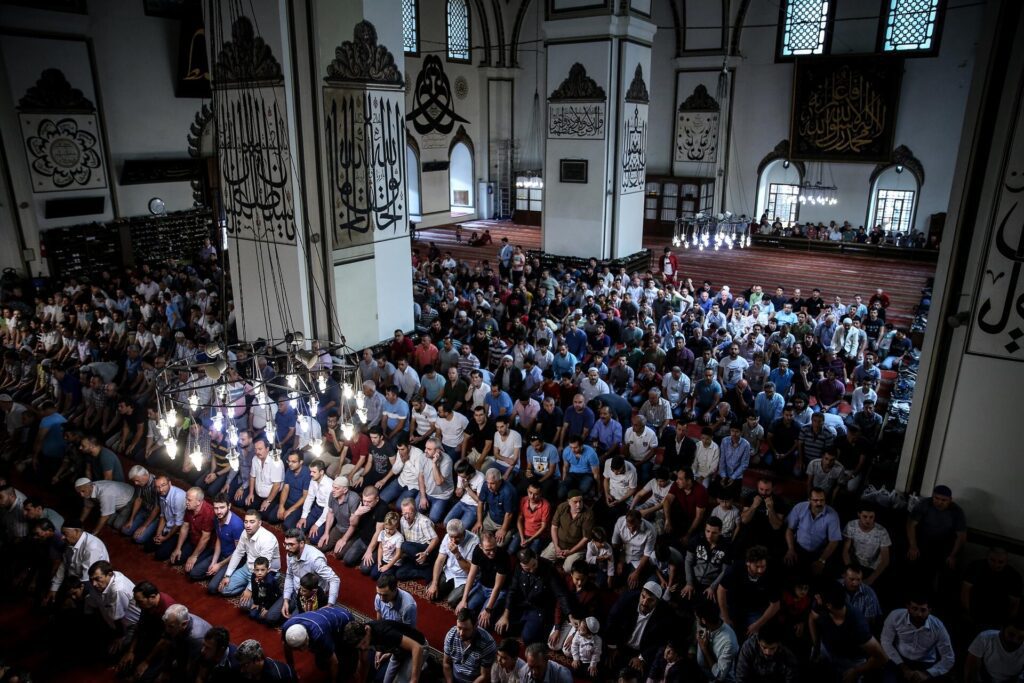
The Feast of the Sacrifice is celebrated with less excitement than Ramadan in Turkey. This festival takes place in Islam as a memory of the story in which a ram fell from the sky just at the moment when the Prophet Abraham was about to sacrifice his son to God.
The period between the month Sevval, in which Ramadan is celebrated, and the month Zilhicce, in which the Feast of the Sacrifice takes place lasts exactly one month and is called Aralik (meaning interval). Marrying between these two festivals is considered to be unlucky. On the first day of the Feast of the Sacrifice, hadjis sacrifice rams in Mina in Mecca. If a Muslum has the money, sacrificing is a religious obligation. Rams, camels or cattle may be sacrificed. The sacrificial animal must be healthy and if it is female, it must not be pregnant. A number of traditions surround animal sacrificing. Some of these come from Islamic rules, while others vary from region to region and nation to nation. For example, in some regions of Turkey rams are washed, painted with henna and are dressed up with bridal ribbons. This tradition of painting rams with henna is also a very old tradition among the Jewish community. Dressing the animal up with different ribbons is a tradition commonly seen in some parts of Central Asia. One-third of the meat from the sacrificed animals is left in the house. The other parts are given to relatives, neighbors and the poor. Both during Ramadan and the Feast of the Sacrifice people come together, celebrate and entertain each other. In cities and villages, children and young people in particular meet each other at festival places and have fun. Festival areas resemble fairs in these days.
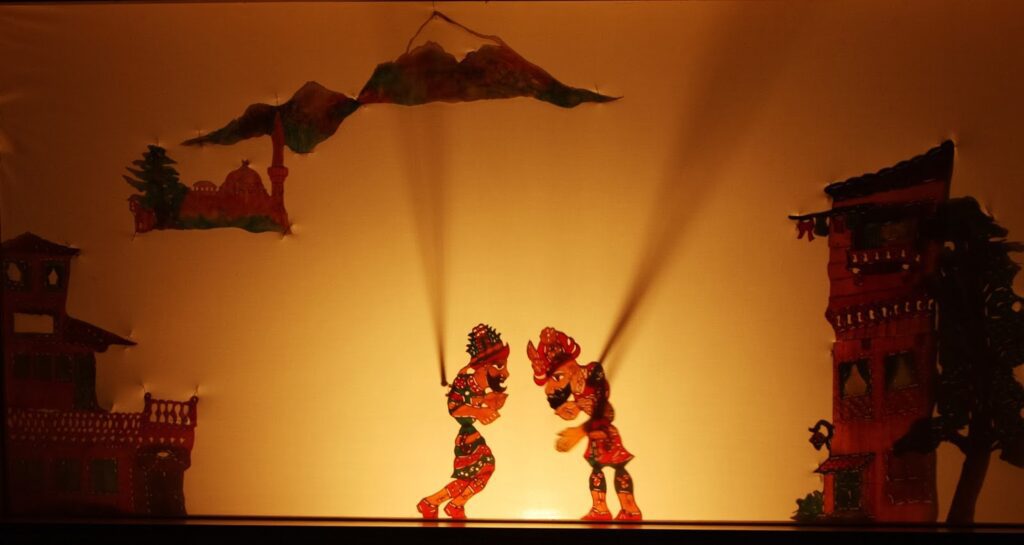
The Ramadan festival comes after one month of fasting. There are also many traditions regarding the fasting month, which is known as Ramadan Month. In former times in particular, and in summer when nights are shorter, people who fasted did not sleep after dinner but waited until sahur (a meal taken just before dawn during Ramadan). In this period, people organized many different forms of entertainments. Karagöz and Ortaoyun were examples of Ramadan shows. In rural areas, people gathered in houses and in coffee houses where wandering minstrels used to play instruments and sing. Added to these wandering minstrel songs, folk stories that could last up to a few days were recounted.
Mevlana Whirling Dervishes Festival (December)
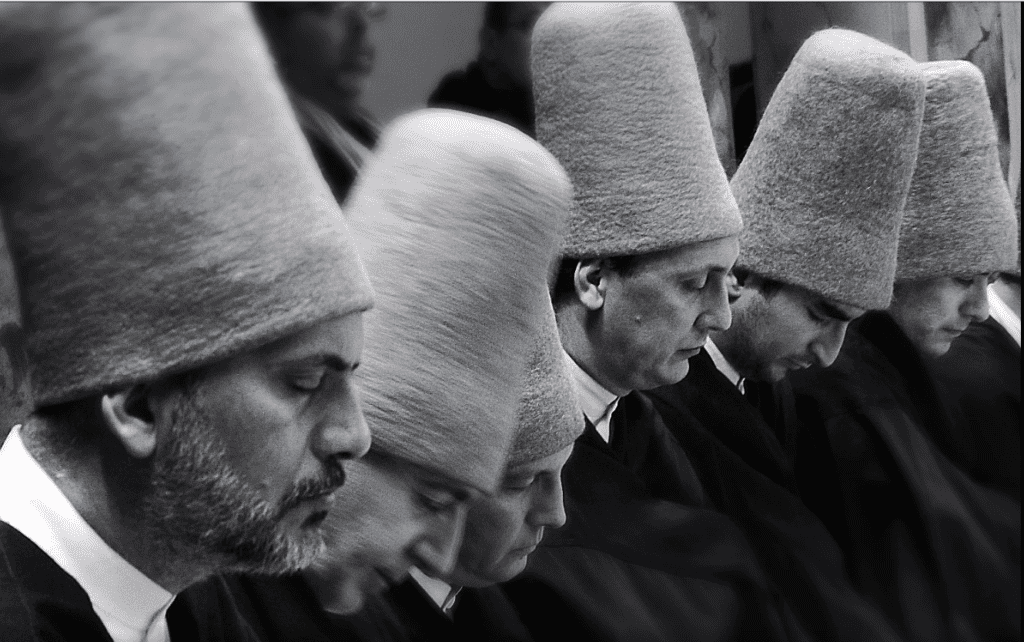
Learn more about Mevlana‘s thought, the great Sufic saint, is one of the world’s greatest philosopher and the father of the Mevlevi sect. Mevlana Whirling Dervishes Festival, the music, dance, listening and spiritual experience fuse together during the dance of the Dervishes. Read more about Whirling Dervishes Ceremony and Mevlana Museum.
Seasonal Festivals
Hidrellez Traditions (May)
Hıdrellez, is one of the seasonal festivals of all Turkish world. Hıdrellez Day, which is known as Ruz-ı Hızır (day of Hızır), is celebrated as the day on which Prophets Hızır and Ilyas met with each other on the earth. The words Hızır and İlyas have since fused together pronounced as Hıdrellez. Hıdrellez Day falls on May 6 in the Gregorian calendar and April 23 in the Julian calendar, also known as the “Rumi” calendar. In the folk calendar used by the people, the year used to be divided into two: The period between May 6 and November 8 was summer, called the “Days of Hızır”, and the period between November 8 and May 6 was winter, called the “Days of Kasım”. May 6 thus represents the end of winter and the start of the warm days of summer, a cause for celebration. There are various theories about the origin of Hızır and Hıdrellez. Some of these suggest that Hıdrellez belongs to Mesopotamian and Anatolian cultures, and others that they belong to pre-Islamic Central Asian Turkish culture and beliefs. However, it is impossible to ascribe the Hıdrellez festival and beliefs surrounding Hızır to a single culture. Various ceremonies and rituals have been performed for various gods with the arrival of spring or summer in Mesopotamia, Anatolia, Iran, Greece and in fact all eastern Mediterranean countries since ancient times.
Hıdrellez celebrations are always performed in green, wooded places, near sources of water, or near a tomb or shrine. Eating fresh spring plants, lamb’s meat or lamb’s liver is another custom in Hıdrellez. It is believed that eating the first lamb of spring will bring health and cure the sick. It is also believed that picking flowers or plants in the countryside, boiling them and drinking the water will cure all illnesses, and that the water thus obtained rejuvenates and beautifies anyone who washes with it for forty days. Various practices are performed on Hıdrellez night in the belief that Hızır will bring blessing and abundance to the places he visits and the things he touches. Food bowls, pantries and purses are left open. Those who want a house, vineyard or garden believe that Hızır will help them obtain such things if they make a small model of what they want. The night before Hıdrellez, young girls who want to test their fortune and improve their luck gather in a green place or near water. They place some of their belongings, such as a ring, earring or bracelet in an earthenware jar and close the jar with fine muslin. They then they put the jar at the bottom of a rose tree. Early in the morning, they approach the jar and drink coffee with milk and pray for their peace and tranquility not to be spoiled. They then open the fortune jar. As they remove the objects from the jar, they recite verses or quatrains, and comments are made regarding the owner of the object that is taken out. This practice, peculiar to Hıdrellez, may differ slightly in procedure in different regions of the country. Recently, this ceremony has tended to be performed only to bring a change in fortune for spinsters.
Nevruz (March)
The word Nevruz is of Persian origin and is a combination of the words “nev” (new) and “ruz” (day), meaning new day. According to the old Persian calendar, it is the first day of the year and regarded as the start of spring, when the sun enters the house of Aries. The sun gives more light and heat to the southern hemisphere until March 21, after which this applies to the northern hemisphere instead. That is why March 21 is a day to celebrate for people living in the northern hemisphere as the symbol of awakening and creation.
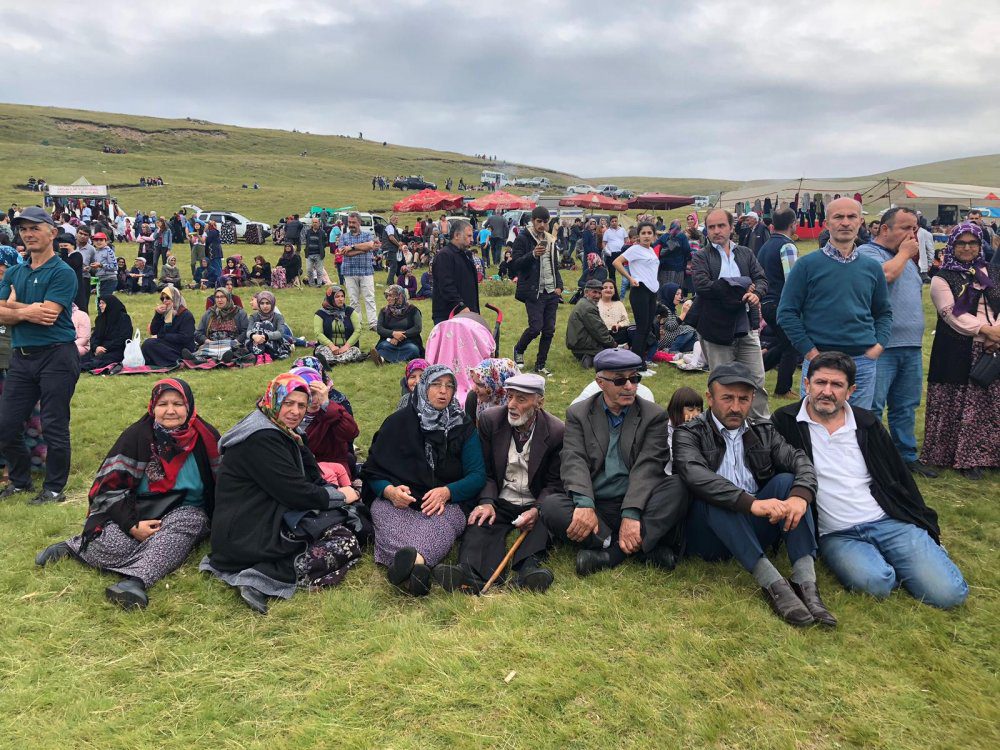
Not only Nevruz Day, but also Nevruz Night has a heavenly significance for the people of Eastern Anatolia. It is believed that all creatures and things prostrate themselves before God on this night. That day, every individual’s fortune and future for the next year is set out. People prepare for the new year by wearing new and beautiful clothes. Meals are cooked in the home, and mutual visits take place. Another custom seen in some regions of Anatolia in March is “Black Wednesday.” Various ceremonies are performed at this time, and meals prepared and eaten communally on this day, the first Wednesday in March. The young make wishes and listen at their neighbors’ doors. On Nevruz Day, people lay their tables with an assortment of foodstuffs, play games, hold festivities, eat painted eggs and prepare large fires. Nevruz, which every society celebrates in forms peculiar to itself, still exists with traditional celebrations in Azerbaijan, Kazakhstan, Kyrgyzstan, Turkmenistan, Uzbekistan, Tatarstan, the Uygur region, Anatolia and the Balkans.
Animal Husbandry and Shepherding Festivals Spring
Ram Mating Ceremonies
In Anatolia, ram mating ceremonies take place between 1st –20th October. One or two months beforehand, rams are removed from the herds. The first day of the ram increase ceremonies is celebrated as a festival almost in everywhere. Village residents gather in the village square with their drums and zurna (a reed instrument somewhat resembling an oboe). Shepherds allow the rams, which are dressed up and decorated with henna, to join the females. In some places, imams read out prayers at the same time

The Saya Festival
The festival known as saya, the face of the sheep or goat, is celebrated 100 days after the ram mating festival. The gestation period in sheep lasts 150 days. It is believed that the foetus comes alive and its hair begins to grow longer inside its mother on the 100th day. That is why the day is known as the face of the sheep. The Saya festival is celebrated with even more excitement than the ram mating festival. Three kinds of activity go on during the night:
- Shepherds, children and young people wear unusual clothes and visit each others house in turn. They engage in repartee known as the “words of sayaci” and collect cash and food.
- In some places, people play games in front of the houses. In one of these, an old person and a dark-skinned resident of the village pretend to fight, and the older resident feigns death. He is then restored to life by putting food on his mouth.
- After visiting houses, a meal is prepared with the collected food, and the sayaci eat
this meal communally. They enjoy themselves until the morning, playing musical instruments and singing song
Lambing Ceremonies

These are celebrated 50 days after the saya, when sheep begin to give birth, and are the last part of the shepherd festivals which last five months. In Anatolia, the birth of new lambs is celebrated with various traditional ceremonies, although it would not be correct to regard that occasion as a festival. According to information from Malatya, Kars, Erzincan and their surroundings, shepherds visit flock owners’ houses and collect gifts from them when their sheep give birth. The shepherd is given tips when he takes the first lamb from the mountain to the village
Festivals Ceremonies and Celebrations in Turkey : Regional Festivals
Mesir Paste Festival (Unesco Intangible Cultural Heritage) (April)
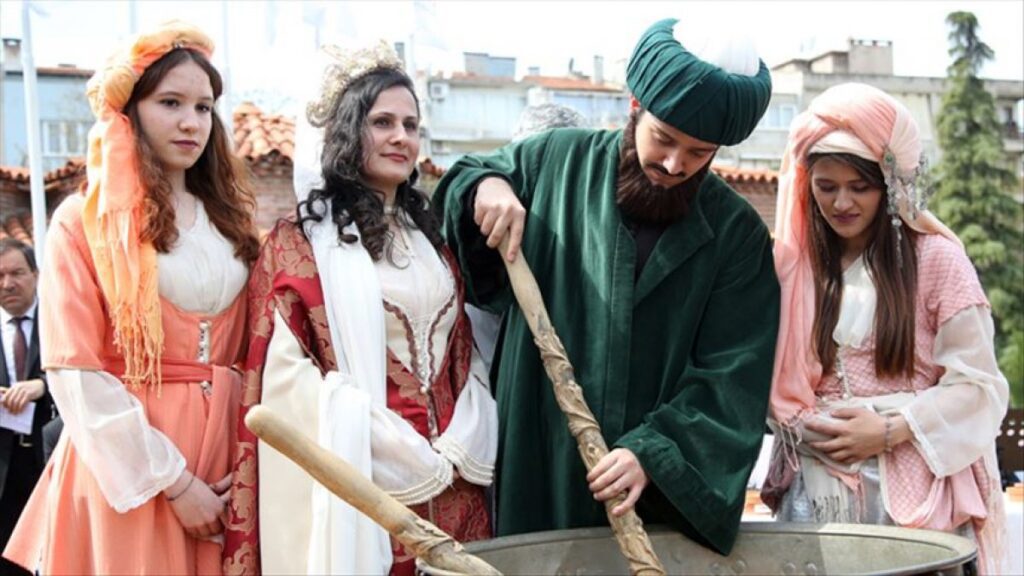
Mesir Paste Festival of Manisa, Turkey, commemorates the recovery of Hafsa Sultan, mother of Suleyman the Magnificent, who was cured of a disease by the invention of a paste known as Mesir Macunu in Turkish. The Sultan then ordered that the paste be disseminated to the public. Every year from 21 to 24 March, the paste is prepared by a chef and apprentices from 41 fresh spices and herbs according to traditional practice. A team of 14 women wrap the paste in small pieces of paper, and 28 imams and apprentices bless it before scattering the paste from the top of the minaret and the domes of the Sultan Mosque. Thousands of people come from different regions of Turkey to compete to catch the pieces as they fall. Many believe that by so doing their wishes for marriage, work and children will come true within a year. A 45 piece orchestra dressed in traditional clothing perform historical Ottoman music during the preparation of the paste and throughout the festival.
Istanbul Polonezkoy Cherry Festival (June)

Traditional Polonezkoy Cherry Festival is held in Polonezkoy every year on the 1st and 2nd weekends of June. During the Cherry Festival, shows of folklore teams from Poland, various cultural activities, exhibitions, concerts and recitals are held in village. The festival is also a symbol of the culture, friendship and hospitality between Turkey and Poland for more than 160 years. It was a unique event in Istanbul. Parties, cultural organizations, concerts, folk dancing and many activities take place during the festival and many locals and tourists come visit the village and have joyful moments.
Oil Wrestling Festival June-July)
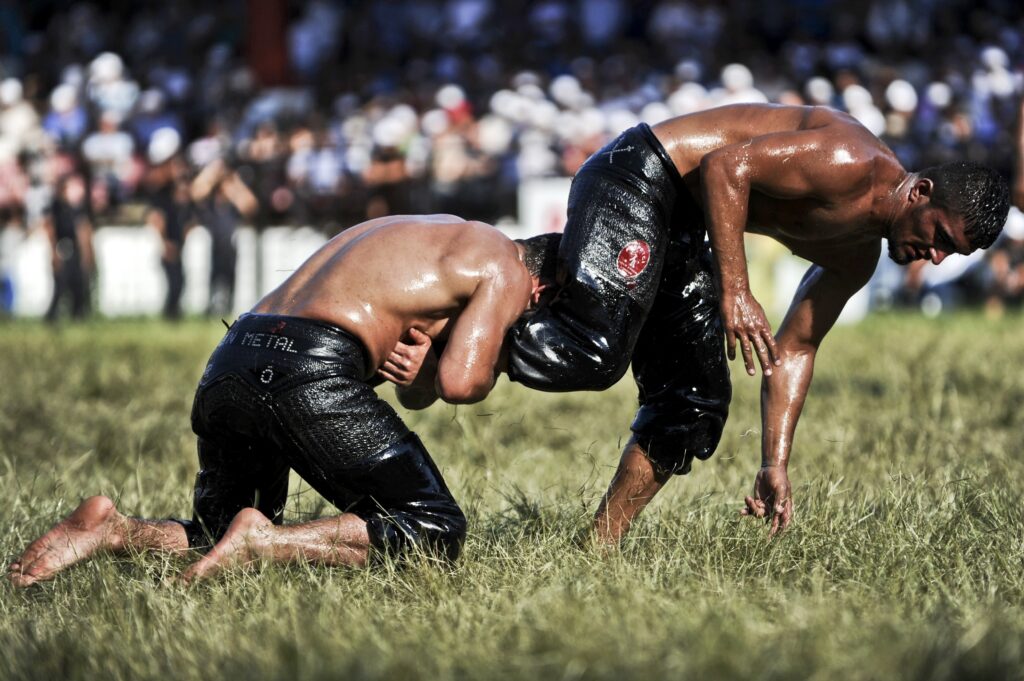
Do you know what is oil wrestling? To many the idea may sound like a joke, but to the competitors and fans at the 600-year-old Kirkpinar Oil Wrestling Festival, this big tournament at the start of June is the FA Cup final of a sport steeped in history. Read more on Oil Wrestling in Turkey
Camel Wrestling Festival (January)
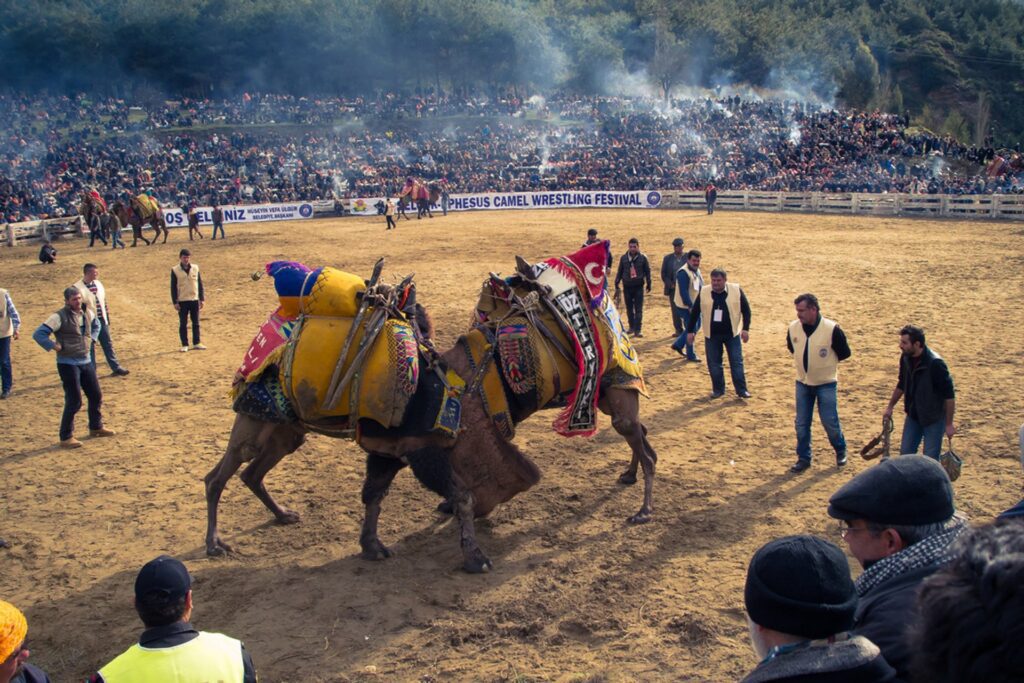
Camel wrestling is one of the very popular traditional sports in Turkey. Today, camel wrestling is seen in the cities of Aydin, Izmir, Mugla, Denizli and Manisa in the Aegean region, Balikesir and Canakkale in the Marmara region, Antalya, Burdur and Isparta in the Mediterranean region of Turkey. Camel Wrestling is thought that this sport has its origins in the nomadic tribes who depended on camels for their livelihood. It is mostly popular in the Aegean region, where contests are held in the winter months from December to March.
Kafkasor Bullfighting Festival (June)
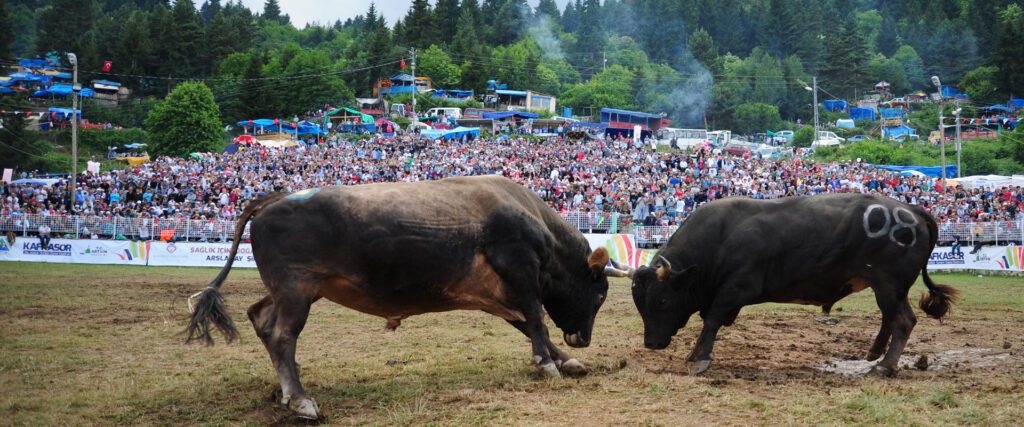
Artvin, with its unique Kafkasör bullfights which offer scenes of breathtaking excitement, as well as its other festivals and feasts, is a region that should on no account be missed. The most interesting part of the festival held on the third week of June every year is the bullfighting. Bulls from all parts of the province are classified according to the thickness of their necks or weight, and pitted against one another. Certain rules have been applied since the bullfights first began in order to protect bulls from injury and suffering. When the weaker bull withdraws from the arena, that defeat is accepted and it is taken out of the arena by the people in charge. In this way, Kafkasör bullfights have become an atmosphere of sports and entertainment with their own rules.
Akşehir Nasrettin Hoca Ceremonies (July)

Nasreddin Hodja, a folk hero who lived in Aksehir district of Konya, reflected the fact that the Turkish nation was ready to answer with his laughter. Nasrettin Hodja is a person who fused his culture with the folk culture by spreading his culture around him. Its tomb is located in Aksehir. Nasreddin Hodja; He is a social pioneer and a people leader who left his mark on the period he lived and after the ages. Nasreddin Hodja lived in Aksehir and sent messages to all humanity from the people of Aksehir. International Nasreddin Hodja festivals are held every year in July in Akşehir. Hodja; It belongs to Akşehir with its yeast of hope played to Lake Akşehir, its donkey carrying the middle of the world to Akşehir, its tomb that has been standing for centuries, its jokes that have been transferred from language to language, and the jokes that it wants to stretch to the windy lodge.
Mengen Cookery Festival (August)

Mengen is famous for its cooks and its annual cookery festival; chefs trained in Mengen can be found in the best hotels all over Turkey. The town is along the historical travel route between the large cities of Istanbul and Ankara, and a popular lodging destination for travelers between the cities. The cookery school in Mengen has traditionally trained chefs for the Turkish president in Ankara and other high government officials. Read more on Turkish Cuisine.









